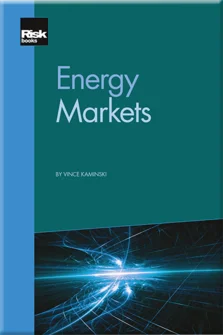Oil Pricing
Oil Pricing
Energy Markets: Introduction
Energy Trading and Marketing: The Macro View
Energy Trading: The Organisation
Weather Information in Energy Trading
Energy Markets: The Instruments
Energy Markets: Structured Transactions
Energy Markets: Exchanges
Energy Markets: Market Participants and Regulatory Developments
Natural Gas: Upstream
Non-conventional Natural Gas
Natural Gas Transportation and Storage
US Natural Gas Markets
International Natural Gas Markets
Oil Markets: Properties, Production and Reserves
Non-Conventional Oil
Oil Processing
Oil Transportation and Storage
Oil Pricing
Transactions in the Oil Markets
Electricity: The Basics
Power Generation
Transmission, Loads and Power Pools
Analytical Tools
Electricity Markets Transactions
Manipulation and Gaming of Energy Markets
Emission Markets
Coal Markets
Conclusions
Any casual observer of the energy markets living in the US associates the price of crude with the price of the prompt WTI contract traded on Nymex. The reality of crude pricing, given the multiplicity of grades and locations, is quite complex and poorly understood even by many practitioners in the energy industry. The world oil markets have evolved over the last 50 years towards increased transparency and efficiency of price discovery. Having said that, they have remained quite opaque and this condition gives a significant advantage to experienced traders operating in organisations with access to information about inventories, production trends, transportation flows, conditions of the physical infrastructure for the production and processing of crude oil, and other critical industry factors.
We will start this chapter with a review of the different ways of pricing oil in the past. The oil market today is based on a number of benchmarks (Brent, WTI, Oman/Dubai) that everybody complains about but still uses in the absence of a better alternative. The word “benchmark” may be somewhat misleading here, because in practice we are not dealing with a single easily identifiable price, but
Copyright Infopro Digital Limited. All rights reserved.
As outlined in our terms and conditions, https://www.infopro-digital.com/terms-and-conditions/subscriptions/ (point 2.4), printing is limited to a single copy.
If you would like to purchase additional rights please email info@risk.net
Copyright Infopro Digital Limited. All rights reserved.
You may share this content using our article tools. As outlined in our terms and conditions, https://www.infopro-digital.com/terms-and-conditions/subscriptions/ (clause 2.4), an Authorised User may only make one copy of the materials for their own personal use. You must also comply with the restrictions in clause 2.5.
If you would like to purchase additional rights please email info@risk.net











